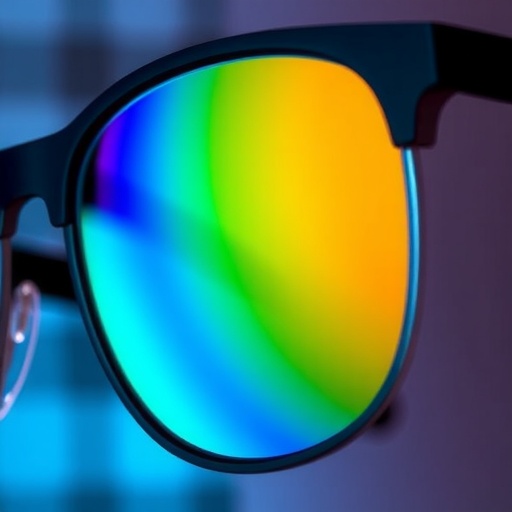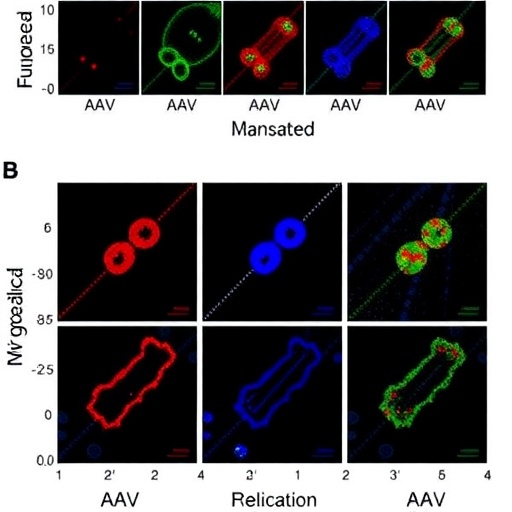MXene-Coated Smart Contact Lenses: Revolutionizing Eye Protection Against Electromagnetic Radiation
In today’s hyper-connected era, the proliferation of wireless devices has introduced unprecedented levels of electromagnetic radiation (EMR) exposure, raising critical concerns about the long-term implications for human health. Among the most vulnerable organs to continuous EMR exposure are the eyes, which are directly exposed when using wearable electronic devices such as smart contact lenses. Addressing this challenge, a team of researchers from Japan’s prestigious Waseda University has pioneered a novel approach by developing MXene-integrated contact lenses that not only provide exceptional electromagnetic shielding but also maintain optical clarity and biocompatibility, marking a significant advancement in wearable eye healthcare.
MXenes, a relatively new class of two-dimensional transition metal carbides and nitrides, have garnered immense interest for their outstanding electrical conductivity, flexibility, and layered structure. Despite these promising properties, their practical applications—particularly in biointerfaces—have been hindered by poor adhesion to substrates and rapid oxidation when exposed to ambient environments. Such limitations have previously prevented MXenes from being effectively applied in delicate biomedical devices, including contact lenses that demand both durability and transparency.
.adsslot_iZIgElnJOj{ width:728px !important; height:90px !important; }
@media (max-width:1199px) { .adsslot_iZIgElnJOj{ width:468px !important; height:60px !important; } }
@media (max-width:767px) { .adsslot_iZIgElnJOj{ width:320px !important; height:50px !important; } }
ADVERTISEMENT
Led by Professor Takeo Miyake of Waseda University’s Graduate School of Information Production and Systems, the research team has surmounted these obstacles through an innovative wet-transfer fabrication method. This technique facilitates stable and uniform deposition of MXene nanosheets onto the intricate curved surfaces of soft contact lenses. Crucially, by leveraging mixed cellulose ester (MCE) membranes during vacuum filtration, the researchers produced MXene films with enhanced adhesion and an intrinsic protective barrier against environmental oxidation, ensuring the longevity and stability of the coating.
To simulate realistic conditions and rigorously test the electromagnetic shielding capabilities, the research team conducted controlled experiments on porcine eyes, which serve as a close analog to human ocular tissue. When subjected to high-frequency microwave radiation, the MXene-coated lenses effectively absorbed and dissipated electromagnetic energy, preventing direct thermal damage to the eyes. Thermal imaging results highlighted a rapid temperature rise in the lenses themselves, illustrating that the electromagnetic energy was being converted harmlessly into thermal radiation away from the ocular surface.
One of the most remarkable findings of the study was the electromagnetic shielding efficiency achieved, reaching up to 93%—a record-high value for biocompatible materials at comparable thicknesses. This high-performance shielding effectively blocks harmful high-frequency radiation, mitigating risks associated with prolonged exposure to EMR from increasing wireless communication networks and emerging wearable technologies. This level of protection is critically important as smart contact lenses evolve to include integrated sensors, displays, and wireless communication modules.
Beyond mere shielding, the MXene coatings impart an additional layer of protection through dehydration resistance, enhancing the lenses’ durability and comfort during extended wear. The tunable thickness of MXene films, achieved by varying dispersion concentrations, allows customization of the shielding and conductivity parameters depending on specific applications. The MCE membrane, serving as an adhesive intermediary layer, also functions as a protective shield, preventing MXene oxidation, thus ensuring sustained functionality.
Professor Miyake emphasizes the broader implications of their method, stating that the ability to stably coat flexible substrates with MXene using a simple, scalable wet-transfer process opens new avenues for commercial and biomedical applications. The resolution of the long-standing oxidation challenge marks a turning point for MXene-based devices, extending their practical usability in environments previously deemed prohibitive.
This breakthrough not only enhances the safety profile of wearable electronic lenses but also accelerates the integration of advanced two-dimensional materials in the broader realm of bioelectronics and smart wearables. By creating a seamless interface between high-performance nanomaterials and biological tissues, these MXene-coated lenses represent the forefront of next-generation devices capable of monitoring, protecting, and interacting with human physiology.
The collaboration between Waseda University, Kyoto University, and Yamaguchi University Hospital has synergized multidisciplinary expertise spanning nanofabrication, material science, and ophthalmology, ensuring that the developed lenses meet stringent safety standards alongside functional excellence. This convergence is vital as smart contact lenses transition from conceptual innovations to everyday wearable health technologies.
Looking ahead, the research paves the way for multifunctional smart lenses that could incorporate biosensors, drug delivery systems, and real-time health diagnostics while offering robust defense against the ever-present EMR environment. Such lenses have the potential to revolutionize not only ophthalmology but also personalized medicine, sports monitoring, and augmented reality interfaces.
In conclusion, the advent of stable MXene-coated contact lenses is a groundbreaking stride in the quest for safer, smarter wearable devices. This innovation encapsulates the promise of nanotechnology and materials science to transform health technologies while addressing practical challenges related to user safety, comfort, and device longevity. As wireless communication continues to expand, adopting such protective biointerfaces will be crucial to safeguarding ocular health in the digital age.
Subject of Research: Animals
Article Title: MXene-Integrated Contact Lens: A Breakthrough in Wearable Eye Protection and Healthcare
News Publication Date: 4-Jun-2025
Web References: https://doi.org/10.1002/smsc.202400628
References: Takeo Miyake, Lunjie Hu, Jun Hirotani, Kazuhiro Kimura, Atsushige Ashimori, Saman Azhari, Small Science, June 4, 2025, DOI: 10.1002/smsc.202400628
Keywords: MXene, electromagnetic radiation shielding, smart contact lenses, wearable technology, biocompatible materials, nanofabrication, wet-transfer method, eye protection, two-dimensional materials, bioelectronics
Tags: biocompatible eyewear technologydurable optical deviceselectrical conductivity in eyewearelectromagnetic radiation protectioneye safety and healthinnovative biomedical applicationsMXene-coated smart contact lensesoptical clarity in contact lensesresearch breakthroughs in eye protectionsmart wearable technologytwo-dimensional materials in opticswearable eye healthcare advancements





